What Is Vertex?
Vertex is a point on a polygon where the sides or edges of the object meet or where two rays or line segments meet. The plural of a vertex is vertices.
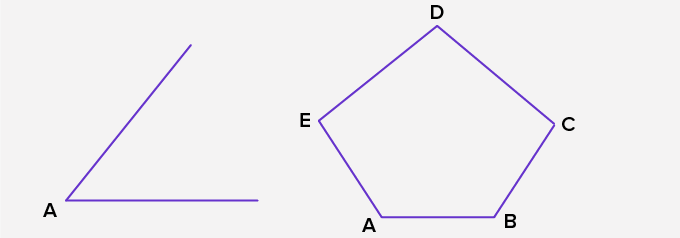
For example, in the above figures, points A, B, C, D, and E are vertices.
History
Vertex is part of Euclidean Geometry, first published in a book about Geometry in the late 19th century. The concept of vertex forms the basis of explaining many advanced concepts of geometry.
Features of a Vertex
- Line segments and Rays
A line segment is a part of a line. A ray is a line segment that we can extend indefinitely. When two line segments or rays meet, they form an angle. By definition, when two lines meet to form an angle, a vertex is formed. So, we can say that the meeting of two line segments or rays forms a vertex.
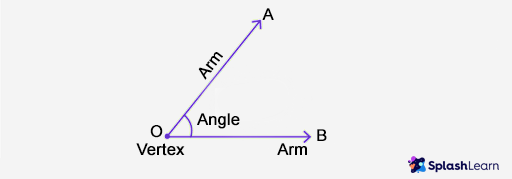
The above figure shows two ray segments meeting at a common point to form a vertex.
- 2D figures
A 2D or two-dimensional figure is a figure or shape that we can represent in two dimensions or on paper. Some 2-D shapes include circle, square, rectangle, and triangle. The vertex of a 2D figure is the point of intersection of two sides of the shape. The two sides of the shape or figure meet to form an angle, and thus a vertex is formed.
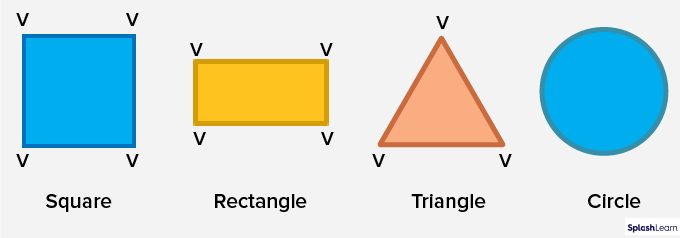
In the above 2D figures, V represents the vertices of each figure. A square and a rectangle have four vertices each. A triangle has three vertices, while a circle does not have any vertex.
- 3D figures
A 3D or three-dimensional figure is a figure or object that is represented in three-dimensional space. A 3D figure or a solid shape has all three attributes, including length, breadth, and height. The vertex of a 3D figure is the point of intersection of two sides of the figure. Multiple sides and edges can intersect at one point in a 3D figure. Each such point of intersection forms a vertex. Some 3D shapes include cubes, cuboids, pyramids, spheres, and cylinders.
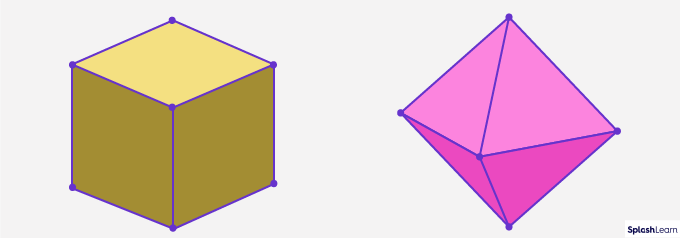
The above figures are a cube and an octahedron. A cube has eight vertices, while an octahedron has six vertices. The red dots represent the vertices of these 3D objects.
Properties of a Vertex
- A figure or object that does not have any sides or edges does not have any vertex. For example, sphere, cylinder, and circle do not have any vertices.
- When two lines meet at a point to form a vertex, they also form an interior angle of the figure.
Examples
Q. Find the number of vertices in the given figure.
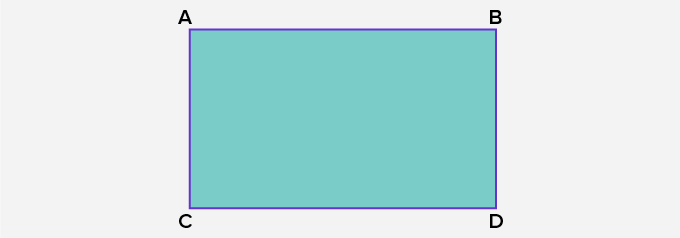
- The given figure is a rectangle. It has four vertices. The vertices are A, B, C, and D.
Q. Find the number of vertices in the given figure.
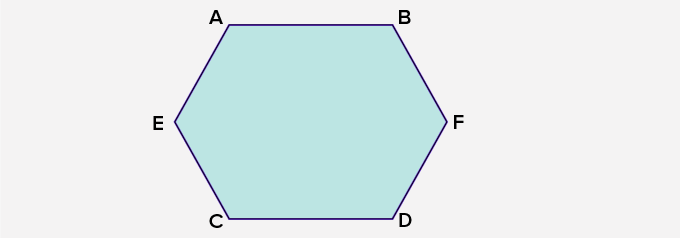
- The above figure is a hexagon. It has six vertices. The vertices are A, B, C, D, E, and F.
Q. Find the number of vertices in the given figure.
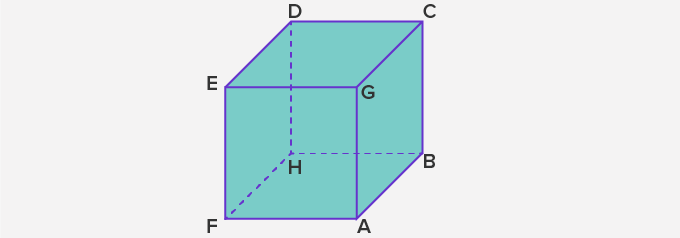
- The above figure is a cuboid. It has eight vertices. The vertices are A, B, C, D, E, F, G, and H. A cuboid has six faces and twelve edges.
Conclusion
Geometry is a crucial part of mathematics that forms a large part of the curriculum for students. Advanced learning of geometry is possible only with the correct understanding of the basics of geometry. Vertex is one of the preliminary topics that make the foundation of Geometry. Help your kids learn about vertex with detailed course material from SplashLearn. The engaging games and interactive worksheets from SplashLearn provide enough practice for young learners to master the concept. So, make the most of online learning with impactful resources from SplashLearn!
Practice Problems
Vertex
How many vertices does a circle have?
A circle does not have any vertex as there are no angles or edges in a circle. The correct option is d.
How many vertices does a pentagon have?
A pentagon has five vertices. The correct option is d.
How many vertices does a square have?
A square has four vertices. The correct option is b.
Frequently Asked Questions
How many vertices does a cone have?
A cone has a single vertex. There is only one point on the cone where its surface meets and forms an angle. Hence, only a single vertex forms in a cone.
How many vertices does a cube have?
A cube has eight vertices. A cube is a three-dimensional object with six faces, twelve edges, and eight vertices.
Which objects do not have a vertex?
Any object with no straight edges or angles formed by edges does not have a vertex. Examples of objects without a vertex are circles, cylinders, and spheres.
How many vertices does a tetrahedron have?
A tetrahedron has four vertices. It also has six edges and four triangular faces.
















